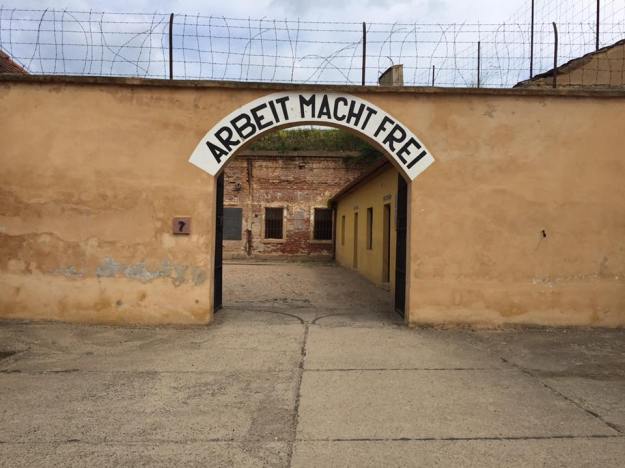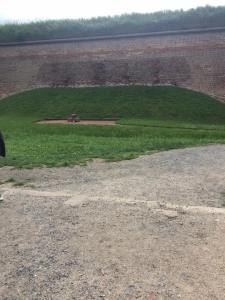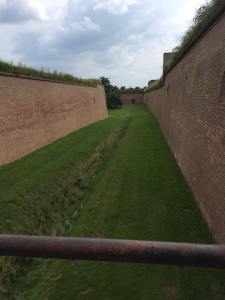Standing here I am locked in by the same four walls. The same four walls that innocent Jewish people were forced to stand in, side by side, in a cell made for one. The origin of the cell was intended for the use of punishing one person for their actions against the Nazi regime. However, people upon people were piled into the room. The cell had one cut out square in the cement wall for the purpose of ventilation. Yet, the ventilation provided little to no air for the prisoners. During the middle of the night, forced to sleep standing up, they were suffocated to death.
Terezin was established in 1780 on the orders of Emperor Joseph II. It was constructed as a fortress to protect Bohemia against the Prussian troops. The fortress, however, was never used for its original purposes. By the end of the 19th century, the facility was being used for military and political prisoners. The most infamous prisoner was Gavrilo Princip. He was convicted of the assassination of Archduke Ferdinand, the assassination that it said to have started World War 1. He died in cell number 1 of tuberculosis.

After Hitler had successfully invaded Czechoslovakia, on June 10, 1940, the Gestapo took control over Terezin. The first inmates were moved in the small fortress, the location of the Jewish prison, four days later. The larger fortress was used as a Jewish Ghetto during World War 2.
The eerie presence of the prior history hits you as soon as you drive into the fortress, which is still an inhabited town. The walls of the fortress are built for protection of the people living within. Despite the fortification intended for security most of Terezin’s history was never used for this purpose. The walls of Terezin saw more destruction than preservation.

The irony of the location is found around every corner. First and foremost, the irony that the fortress was built for protecting the people within it yet, thousands of innocent lives were lost inside the fortified walls. There is also the interesting juxtaposition of the run down isolation cells traced with death. The location of the old moat around the town is now filled with an abundance of green grass. From the bridge connecting the prison cells to the crematorium, you can look off into the distance and run your eyes down the fortified walls. The ground is full of vibrant green grass. The top of the walls are crowded with overgrown weeds and grass. The beauty of the scenery makes you forget the death that occurred beyond your standing position.

Lastly, it is hard not to address the elephant in the room when visiting. It is the first thing not only I but many of the people in the tour group recognized. There are still a few thousand people residing in Terezin. They live in the same homes that Jews were placed in during World War 2. Within the Ghetto, many people died of disease and famine. Yet, these people are willingly living within these same buildings despite their gory history.
The overall tone of Terezin is hard to capture in words. It is not even plausible to capture it in pictures either. However, you can be assured that it is powerful, haunting and beautiful all mixed into one.
Additional resources about Terezin:
http://www.jewishvirtuallibrary.org/jsource/Holocaust/terezin.html
https://www.ushmm.org/wlc/en/article.php?ModuleId=10005424
http://www.yadvashem.org/yv/en/holocaust/about/03/terezin.asp
Blog post written by: Samantha Blair
